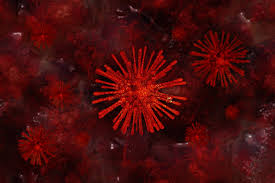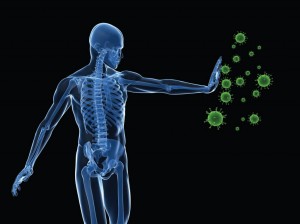Abstract
Persistent colonization and outgrowth of potentially pathogenic organisms in the intestine can result from long-term antibiotic use or inflammatory conditions, and may perpetuate dysregulated immunity and tissue damage1,2. Gram-negative Enterobacteriaceae gut pathobionts are particularly recalcitrant to conventional antibiotic treatment3,4, although an emerging body of evidence suggests that manipulation of the commensal microbiota may be a practical alternative therapeutic strategy5,6,7. Here we isolated and down-selected commensal bacterial consortia from stool samples from healthy humans that could strongly and specifically suppress intestinal Enterobacteriaceae. One of the elaborated consortia, comprising 18 commensal strains, effectively controlled ecological niches by regulating gluconate availability, thereby re-establishing colonization resistance and alleviating Klebsiella– and Escherichia-driven intestinal inflammation in mice. Harnessing these activities in the form of live bacterial therapies may represent a promising solution to combat the growing threat of proinflammatory, antimicrobial-resistant Enterobacteriaceae infection.
Main
The discovery and clinical application of potent antimicrobial agents has been a double-edged sword, saving countless lives worldwide while simultaneously spurring the evolution and expansion of multidrug-resistant organisms that have become an important threat to global health. In particular, Gram-negative Enterobacteriaceae such as Escherichia and Klebsiella species have emerged as important multidrug-resistant nosocomial pathogens for which limited therapeutic options exist3,4. Broad-spectrum antibiotics are often used to treat multidrug-resistant Enterobacteriaceae, which may further aggravate dysbiosis and thus impair colonization resistance. In addition to antibiotic treatment, inflammatory conditions also predispose to Enterobacteriaceae outgrowth1,2,8,9,10,11,12. Indeed, inflammatory bowel disease (IBD) is often associated with dysbiosis and enrichment of Enterobacteriaceae13,14,15, and persistence of Enterobacteriaceae helps to perpetuate intestinal inflammation and nosocomial infections with other microbes16,17,18,19. Moreover, the proliferation of Enterobacteriaceae in the gut constitutes a major risk factor for systemic infection and is linked to increased mortality rates20,21. Several clinical and preclinical studies have found faecal microbiota transplantation (FMT) to be efficacious in reducing levels of Enterobacteriaceae in the intestine5,6,7. Therefore, manipulation of the gut microbiota represents a promising approach to treat IBD and infection with multidrug-resistant organisms. However, FMT therapies have exhibited mixed results, safety concerns and production impracticalities secondary to inherent batch-to-batch variability5. Overcoming these limitations requires identification of specific bacteria or consortia that are capable of decolonizing Enterobacteriaceae and elucidation of their mechanisms of action.
An 18-strain consortium can decolonize Klebsiella
Klebsiella species comprise a major aetiology of nosocomial infections3,4. We previously isolated multidrug-resistant Klebsiella strains from patients with IBD, including the Klebsiella pneumoniae Kp-2H7 strain, which can expand and persist in the intestine in the setting of antibiotic-induced dysbiosis and promote T helper 1 (TH1) cell-mediated inflammation17. We set out to identify human gut commensals that promote decolonization of Kp-2H7 using the strategy outlined in Extended Data Fig. 1a. Germ-free (GF) C57BL/6 (B6) mice were monocolonized with Kp-2H7 and then orally inoculated with a stool sample from one of five healthy Japanese human donors (A, F, I, J or K). Efficacy of Kp-2H7 decolonization by FMT from each donor was examined by longitudinally quantifying faecal Kp-2H7 colony-forming units (CFUs). FMT from all donors resulted in a 3 to 4 log reduction in Kp-2H7 abundance (Fig. 1a). We cultured stool samples from donors F, I and K using 6 different types of media, and isolated 37 strains (31 unique strains when deduplicated) from donor F, 41 strains from donor I, and 46 strains from donor K based on 16S ribosomal RNA (rRNA) gene sequencing followed by whole-genome sequence analysis (Extended Data Fig. 1b and Supplementary Table 1). A mixture of bacterial strains isolated from each donor was inoculated into Kp-2H7-monocolonized mice to test Klebsiella-decolonization capacity. The mixture of 31 strains from donor F (designated F31-mix) was most effective, and the magnitude and kinetics of Kp-2H7 reduction were similar to those induced by donor F faecal microbiota (Fig. 1b,c).
To identify a minimal effector consortium from F31-mix, mice monocolonized with Kp-2H7 were treated with F31-mix and then given ampicillin via drinking water to perturb microbiota homeostasis (Fig. 1d and Extended Data Fig. 2a). Ampicillin treatment resulted in a transient surge in the abundance of Kp-2H7 (which carries β-lactamase17), whereas the 31 strains showed variable trajectories. The majority of Bacillota strains exhibited an inverse abundance pattern compared with Kp-2H7, whereas Bacteroidota strains remained largely unchanged (Fig. 1d and Extended Data Fig. 2a). We thus divided F31-mix into two groups: 6 Bacteroidota strains (F6-mix) and 25 other strains (F25-mix). F25-mix treatment reduced Kp-2H7 abundance to a similar extent as did F31-mix, whereas F6-mix had no effect (Fig. 1c and Extended Data Fig. 3a). From F25-mix, we excluded five strains that were cleared during ampicillin treatment and two strains (one Ruminococcus and one Coprococcus) that exhibited trajectories similar to Kp-2H7 (Fig. 1d and Extended Data Fig. 2a). A Spearman’s rank correlation test indicated that most of the remaining 18 strains were significantly inversely associated with Kp-2H7 abundance (Extended Data Fig. 2b). We thus tested the activity of these 18 strains (F18-mix) and observed a robust reduction in faecal Kp-2H7 CFUs, with similar magnitude and kinetics to mice treated with the parental F31-mix (Fig. 1c,e). Full-length 16S rRNA gene sequencing of longitudinally collected faecal samples confirmed successful colonization by all 18 strains without contamination, as well as persistent suppression of Kp-2H7 (Extended Data Fig. 3b). Administration of the 13 strains (F13-mix) that were excluded from F31-mix was far less effective at decolonizing Kp-2H7 than F18-mix (Fig. 1c,e and Extended Data Fig. 3b). In addition to its capacity to decolonize Klebsiella, F18-mix exerted potent colonization resistance activity against Kp-2H7, significantly outperforming F13-mix (Extended Data Fig. 3c).
We also generated 7 derivative consortia of F18-mix by subtracting various combinations of bacterial species, yielding consortia that ranged in size from 12 to 17 strains. These consortia exhibited varying capacities to decolonize Kp-2H7 in vivo, although none was as effective as the full F18-mix (Fig. 1c,f). In particular, derivative subsets lacking either group A (4 Blautia strains), B (6 Lachnospiraceae strains), C (5 Bacillota strains) or D (3 strains from other phyla) all exhibited reduced decolonization capacity compared with the full F18-mix (Fig. 1c,f). These results suggest that the F18 members act cooperatively and that all phylogenetic components are required to achieve maximal Kp-2H7 suppression (Supplementary Discussion 1).
F18-mix preferentially suppresses Enterobacteriaceae
We next examined the capacity of F18-mix to decolonize extended-spectrum β-lactamase (ESBL)+ Escherichia coli and carbapenemase (CPM)+ K. pneumoniae strains, both of which are exigent threats to public health4,22. For comparison, we additionally analysed F31-mix, F13-mix, I41-mix and K46-mix, as well as complete faecal microbiota from donor F. F18-mix was highly effective at suppressing intestinal ESBL+ E. coli and CPM+ K. pneumoniae in gnotobiotic mouse, with similar magnitude and kinetics as donor F faecal microbiota, achieving 3 to 4 log reductions in faecal CFUs (Fig. 2a). F18-mix was also highly effective at decolonizing Klebsiella aerogenes (strain Ka-11E12) and adherent-invasive E. coli (AIEC, strain LF82), both of which have been implicated in IBD pathogenesis17,23. K46-mix was as efficacious as F18-mix at decolonizing the tested Klebsiella and E. coli strains, whereas F13-mix and I41-mix were far less effective (Fig. 2a). Notably, members of Pseudomonadota other than Enterobacteriaceae, including Campylobacter upsaliensis and Pseudomonas aeruginosa, were largely resistant to decolonization by all tested consortia including F18-mix (Extended Data Fig. 3d).
We additionally investigated the effects of donor-derived consortia from donors F, K and I on Gram-positive pathogens, including vancomycin-resistant Enterococcus faecium (VRE) and Clostridioides difficile, which are also considered to be high-priority multidrug-resistant threats4. K46-mix was effective against both VRE (ATCC 700221) and C. difficile (BAA1382), whereas I41-mix was not (Fig. 2a). Notably, F31-mix was as efficacious as K46-mix at decolonizing VRE, although this effect was blunted against C. difficile. By contrast, F18-mix was less effective against these Gram-positive pathogens (Fig. 2a). Collectively, these results indicate that the process of narrowing down F31-mix to F18-mix led to the selection of commensals that were preferentially able to decolonize Enterobacteriaceae.
Effect of F18-mix on commensals and colitis
Next, we explored whether F18-mix colonization would affect the abundance of other commensals. We selected seven commensal strains from our culture collection and simultaneously inoculated these strains along with Kp-2H7 into GF mice. We then administered F18-mix by oral gavage and monitored the faecal abundance of each strain over time. All F18-mix-derived strains successfully colonized, accompanied by a notable decrease in Kp-2H7 abundance. The levels of commensal Bacillota and Bacteroidota strains remained largely stable, although there was a reduction in the levels of low-abundance strains (Bifidobacterium and Collinsella) among the seven strains (Extended Data Fig. 3e,f). To examine the effect of F18-mix on commensals in the setting of a more complex microbiota, GF mice were colonized with either I41-mix, K46-mix or both of these consortia together along with a Clostridium scindens strain (a total of 88 strains), followed by oral administration of F18-mix. Strains derived from donors I or K remained largely stable, although some low-abundance members, such as Bifidobacterium, Collinsella and Megasphaera, showed reductions (Extended Data Fig. 3g, Supplementary Table 2 and Supplementary Discussion 2). Together, these data suggest that F18-mix can reduce Klebsiella levels in the intestine without significantly affecting commensal communities.
To further probe clinical translatability, we tested the ability of F18-mix to decolonize Enterobacteriaceae in the context of a complex microbiota associated with IBD. GF mice were inoculated with faecal microbiota from patients with Crohn’s disease (CD15) or ulcerative colitis (UC5) that exhibited enrichment of either K. pneumoniae or ESBL+ E. coli, respectively (Fig. 2b,c). The mice were then treated with vancomycin to generate ecological niches amenable to F18-mix engraftment, followed by F18-mix gavage, thus mimicking a potential clinical treatment regimen using live biotherapeutic products24. Gut microbiome composition was examined by full-length 16S rRNA gene sequencing (Fig. 2b,c) and K. pneumoniae or E. coli burden was determined by counting faecal CFUs (Extended Data Fig. 4a,b). All F18 strains engrafted successfully within the IBD-associated microbial communities, resulting in a concomitant increase in microbial diversity and suppression of K. pneumoniae and E. coli (Fig. 2b,c and Extended Data Fig. 4a,b). As expected, vancomycin treatment alone did not suppress these pathobionts. Thus, the F18-mix can exert anti-Enterobacteriaceae activity in the context of several clinically relevant, complex microbiota.
Kp-2H7 is a strong inducer of intestinal TH1 cells and can act as a colitogenic pathobiont in the context of a genetically susceptible host, such as interleukin-10-deficient (Il10−/−) mice17. To test the effect of F18-mix on Kp-2H7-driven colitis, GF Il10−/− mice were monocolonized with Kp-2H7 and then orally inoculated with either F18-mix or F13-mix. Similarly to wild-type mice, Il10−/− mice treated with F18-mix but not F13-mix showed a 3 to 4 log reduction in Kp-2H7 abundance (Extended Data Fig. 4c). In contrast to F13-mix, F18-mix significantly reduced histological scores of colitis, faecal levels of lipocalin-2 and calprotectin (both of which serve as sensitive biomarkers of intestinal inflammation), and TH1 cell frequency (Extended Data Fig. 4d–g). Similar results were observed when Il10−/− GF mice were colonized with a ulcerative colitis-associated microbiota containing ESBL+ E. coli (UC5). F18-mix treatment successfully decolonized ESBL+ E. coli and protected against intestinal inflammation (Fig. 2d–f). In sum, F18-mix can reduce intestinal Enterobacteriaceae burden and alleviate IBD-like inflammation without disrupting the gut commensal community, suggesting high translational potential.
Exploring mechanisms of Klebsiella decolonization
Next, we sought to reveal the mechanisms underlying F18-mix-mediated Klebsiella suppression. F18-mix was able to efficiently reduce intestinal Kp-2H7 burden in mice that were deficient in IFNγ response (Ifngr−/−), Toll-like receptor signalling (Myd88−/−Ticam1−/− (Ticam1 is also known as Trif)), or innate and adaptive lymphocytes (Rag2−/−Il2rg−/−) (Extended Data Fig. 5a,b), suggesting a mechanism that is independent of the canonical immune system. We also assessed intestinal epithelial cell transcriptomic responses in GF mice colonized with effective (F31-mix or F18-mix) versus less-effective (F13-mix) microbial consortia. However, we could not discern consistent shifts in genes or pathways that were specifically modulated by the effective consortia, including those encoding previously reported putative anti-Klebsiella gene products such as antimicrobial peptides and PPARγ-regulated molecules25,26 (Extended Data Fig. 5c). Therefore, although host factors could still have a role in F18-mix-mediated Kp-2H7 decolonization, we focused our line of inquiry on interbacterial interactions.
Caecal suspensions from mice colonized with F31-mix or F18-mix, but not F13-mix, strongly suppressed the growth of Kp-2H7 upon in vitro anaerobic coculture (Extended Data Fig. 6a). This suppressive effect was abrogated when coculture was performed under aerobic conditions or when the caecal suspension was filtered or heat-inactivated, suggesting that live F18-mix activity is required. Liquid chromatography–mass spectrometry (LC–MS) analysis revealed that mice colonized with effective consortia (F31-mix or F18-mix) contained higher caecal levels of 4-hydroxybenzoic acid (4-HBA), cholic acid, acetate and butyrate than mice colonized with less-effective consortia (F13-mix or F18-mix minus phylogenetic groups A, B, C or D) or Kp-2H7 alone (Extended Data Fig. 6b). These molecules have previously been implicated in colonization resistance mechanisms against Enterobacteriaceae27,28,29. However, cholic acid was completely ineffective at all concentrations tested, and 4-HBA, acetate and butyrate exerted only weakly suppressive effects, requiring a high concentration (and in the case of acetate and butyrate, low pH) to inhibit Kp-2H7 growth in vitro (Extended Data Fig. 6c). Furthermore, high-level butyrate exposure via tributyrin feeding did not affect the kinetics or magnitude of F18-mix- or F13-mix-mediated Kp-2H7 suppression in vivo (Extended Data Fig. 6d).
We next examined whether F18-mix acted by modulating previously reported processes associated with Enterobacteriaceae intestinal fitness. However, the deletion of Kp-2H7 genes associated with quorum sensing (lsrA, lsrC, lsrB, lsrD and lsrR)30, biofilm formation (csgD)31, stress response (rpoS)31 and nitrate respiration (narG, narZ)1,8 did not significantly affect sensitivity to F18-mix-mediated decolonization (Extended Data Fig. 7a). These results suggest that F18-mix exerts anti-Klebsiella activity via alternative mechanisms.
Suppression of Klebsiella via gluconate competition
We next compared the Klebsiella transcriptome in mice colonized with Kp-2H7 plus F18-mix versus Kp-2H7 alone. Co-colonization with F18-mix markedly shifted the Kp-2H7 transcriptional landscape, affecting pathways linked to carbon and amino acid metabolism, as well as the phosphotransferase system (Extended Data Fig. 7b). Notably, monocolonized Kp-2H7 exhibited robust expression of genes involved in the metabolism of various carbohydrates, including gluconate, glucose, xylose, glucuronate, arabinose, galacturonate and ribose (Extended Data Fig. 7c). By contrast, the presence of F18-mix attenuated expression of these genes (Extended Data Fig. 7c), suggesting that F18-mix might inhibit Klebsiella growth by competing for carbohydrates. This hypothesis aligns with previous studies that underscore the role of various carbohydrates in defining Enterobacteriaceae niches in the gut, including glucose32, glucarate33, galactitol34,35,36 and β-glucosidic sugars37, among others38,39.
To identify Kp-2H7 genes that affect its intestinal fitness upon co-colonization with F18-mix, we generated a highly saturated transposon insertion mutant library with approximately 8 × 105 distinct mutations in Kp-2H7, which is estimated to contain more than 100 insertion mutants per gene (Fig. 3a). GF mice were inoculated with a Kp-2H7 pool containing all transposon insertion mutants (Kp-TPs) followed by oral gavage with F18-mix or F13-mix. Faecal samples were collected longitudinally and analysed by transposon insertion sequencing40,41 (Tn-seq). After treatment with F18-mix, 194 Kp-2H7 mutants displayed significantly reduced fitness, many of which were deficient in carbohydrate and amino acid metabolism (Fig. 3b and Supplementary Table 3). Specifically, mutations in genes involved in the metabolism of carbohydrates such as gluconate, glucose and fructose accelerated Klebsiella suppression in F18-mix-treated mice relative to untreated and F13-mix-treated mice (Supplementary Table 3), confirming that F18-mix competes with Kp-2H7 for these carbon sources….







